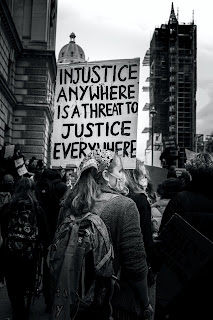Day 55 – Thinking about thinking about theory
 |
| Photo by No Revisions on Unsplash |
It was really interesting for me to go back to the 1992 edition of Poiesis: The language of psychology and the speech of the soul. Here Levine (1992) begins with the desire to affirm his very being – “Always I have sought the creative act, an affirmation of being, an attempt to bring something new into the world” (p. iii). He writes that he is appealing to the “ground of the reader’s being, the creative existence in each of us,” hoping that we will recognize ourselves and feel encouraged to go on living and creating, despite (and perhaps even because of) fragmentation, loss, and suffering.
As a starting off point – I am moved by this appeal. I find it compelling, and I do recognize myself in the impulse to make something of myself and what I encounter in the world. But in the very next paragraph, as Levine begins to describe the fragmentation of self and the striving for integration that happens in the creative process which he posits as central to human existence, I start to feel a bit of a niggling sense that some type of contextualization is missing. The universalizing of experience is unsettling.
But then I go to hooks, and her first essay in Teaching Critical Thinking: Practical Wisdom is about critical thinking and the impulse each of us have as children to “think,” and I am confronted by a similar kind of universalizing…
In her essay Teaching 1: Critical Thinking, hooks (2010), says,
Thinking is an action. For all aspiring intellectuals, thoughts are the laboratory where one goes to pose questions and find answers, and the place where visions of theory and praxis come together. The heartbeat of critical thinking is the longing to know—to understand how life works. Children are organically predisposed to be critical thinking. Across the boundaries of race, class, gender, and circumstance, children come into the world of wonder and language consumed with a desire for knowledge. Sometimes they are so eager for knowledge that they become relentless interrogators—demanding to know the who, what, when, where, and why of life. Searching for answers, they learn almost instinctively how to think. (p. 7-8)
She goes on to talk about the ways children are often taught obedience and conformity rather than critical thinking – and that by the time they go to college they have rarely had “engaged pedagogy” which encourages critical thinking and the practice of freedom and self-determination.
So how do I understand the ways my thinking about thinking gets so jumbled? I will keep working on it!!
hooks, b. (2010). Teaching Critical Thinking: Practical Wisdom. Routledge.



Comments